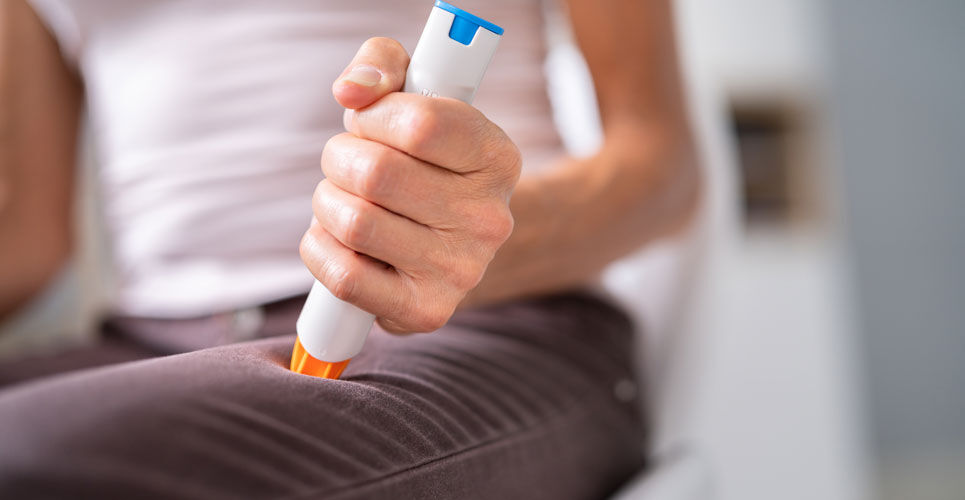An intranasal epinephrine device gives rise to comparable pharmacokinetic and pharmacodynamic outcomes to those of an auto-injector and manual syringe, according to the findings of a study presented at the American Academy of Allergy Asthma and Immunology (AAAAI) 2023.
Anaphylaxis is a serious allergic reaction which has a rapid onset and can lead to death, thereby warranting the need for emergency preparedness with epinephrine (adrenaline) autoinjectors, together with knowledge of how these devices should be used.
However, some evidence suggests significant differences in patients’ carrying time, confidence in use and training experiences with auto-injectors, particularly EpiPens.
The use of an intranasal device has already been explored as an anaphylactic treatment and found to have significant absorption via the this route.
Moreover, evidence from four studies including 175 patients, also showed that intranasal epinephrine increased systolic blood pressure more efficiently than both manual and auto-injectors, despite achieving lower maximum plasma concentrations.
In the data presented at AAAAI, researchers undertook an open-label, 3-period, cross-over study, in 100 healthy adults to assess the relative bioavailability of a single intranasal dose of epinephrine, 13.2mg and which consisted of two consecutive sprays as opposite and single nostril dosing. These were then compared to an intramuscular 0.3 mg auto-injector and a 0.5 mg manual syringe.
Intranasal epinephrine outcomes
The pharmacokinetic parameters for the 13.2 mg intranasal device was higher than that from the 0.3 mg auto-injector (Cmax, intranasal = 429.4, auto-injector = 328.6). However, the peak epinephrine concentrations were similar for the auto-injector (14 minutes) and the intranasal device (20 minutes) when compared to the manual syringe (45 minutes).
There were also similar pharmacodynamic effects based on changes in systolic blood pressure and heart rate between the auto-injector and intranasal device as well as no safety differences.
The authors concluded that the intransal device offers a needle-free, convenient and effective dose delivery system for self-administration of epinephrine and which could serve as an alternative to an intramuscular auto-injector for acute anaphylaxis management.
Citation
Dworaczyk D and Hunt A. 13.2mg Intranasal Epinephrine Spray Demonstrates Comparable PK/PD and Safety to 0.3mg Epinephrine Autoinjector. J Clin Allergy Immunol 2023.
The poster presentation can be found here.

